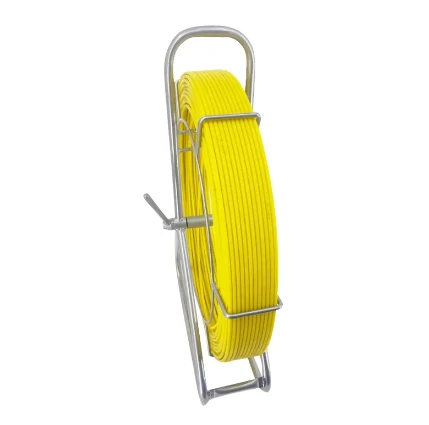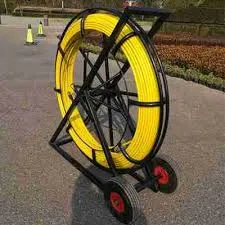
-
 Afrikaans
Afrikaans -
 Albanian
Albanian -
 Amharic
Amharic -
 Arabic
Arabic -
 Armenian
Armenian -
 Azerbaijani
Azerbaijani -
 Basque
Basque -
 Belarusian
Belarusian -
 Bengali
Bengali -
 Bosnian
Bosnian -
 Bulgarian
Bulgarian -
 Catalan
Catalan -
 Cebuano
Cebuano -
 Corsican
Corsican -
 Croatian
Croatian -
 Czech
Czech -
 Danish
Danish -
 Dutch
Dutch -
 English
English -
 Esperanto
Esperanto -
 Estonian
Estonian -
 Finnish
Finnish -
 French
French -
 Frisian
Frisian -
 Galician
Galician -
 Georgian
Georgian -
 German
German -
 Greek
Greek -
 Gujarati
Gujarati -
 Haitian Creole
Haitian Creole -
 hausa
hausa -
 hawaiian
hawaiian -
 Hebrew
Hebrew -
 Hindi
Hindi -
 Miao
Miao -
 Hungarian
Hungarian -
 Icelandic
Icelandic -
 igbo
igbo -
 Indonesian
Indonesian -
 irish
irish -
 Italian
Italian -
 Japanese
Japanese -
 Javanese
Javanese -
 Kannada
Kannada -
 kazakh
kazakh -
 Khmer
Khmer -
 Rwandese
Rwandese -
 Korean
Korean -
 Kurdish
Kurdish -
 Kyrgyz
Kyrgyz -
 Lao
Lao -
 Latin
Latin -
 Latvian
Latvian -
 Lithuanian
Lithuanian -
 Luxembourgish
Luxembourgish -
 Macedonian
Macedonian -
 Malgashi
Malgashi -
 Malay
Malay -
 Malayalam
Malayalam -
 Maltese
Maltese -
 Maori
Maori -
 Marathi
Marathi -
 Mongolian
Mongolian -
 Myanmar
Myanmar -
 Nepali
Nepali -
 Norwegian
Norwegian -
 Norwegian
Norwegian -
 Occitan
Occitan -
 Pashto
Pashto -
 Persian
Persian -
 Polish
Polish -
 Portuguese
Portuguese -
 Punjabi
Punjabi -
 Romanian
Romanian -
 Russian
Russian -
 Samoan
Samoan -
 Scottish Gaelic
Scottish Gaelic -
 Serbian
Serbian -
 Sesotho
Sesotho -
 Shona
Shona -
 Sindhi
Sindhi -
 Sinhala
Sinhala -
 Slovak
Slovak -
 Slovenian
Slovenian -
 Somali
Somali -
 Spanish
Spanish -
 Sundanese
Sundanese -
 Swahili
Swahili -
 Swedish
Swedish -
 Tagalog
Tagalog -
 Tajik
Tajik -
 Tamil
Tamil -
 Tatar
Tatar -
 Telugu
Telugu -
 Thai
Thai -
 Turkish
Turkish -
 Turkmen
Turkmen -
 Ukrainian
Ukrainian -
 Urdu
Urdu -
 Uighur
Uighur -
 Uzbek
Uzbek -
 Vietnamese
Vietnamese -
 Welsh
Welsh -
 Bantu
Bantu -
 Yiddish
Yiddish -
 Yoruba
Yoruba -
 Zulu
Zulu


TEL:
0086-311-88862036
Mar . 06, 2025 11:07 Back to list
driving ground rods in rock
Driving ground rods into rocky terrain presents unique challenges that require specific tools, techniques, and expertise. To achieve optimal results, it's essential to understand the composition of the terrain, the necessary equipment, and the meticulous process involved.
Safety Considerations Safety cannot be overstated. Ensure all personnel involved wear protective gear, including safety goggles, gloves, and helmets. The use of heavy machinery demands adherence to strict operational protocols to prevent accidents. Regular maintenance checks on tools and equipment are essential, reducing the risk of malfunction during operation. Environmental Impact and Regulations Modern installations require a consideration of environmental regulations. Familiarize yourself with local laws regarding excavation and rock penetration to avoid legal issues. In some regions, specialized permits may be necessary for drilling and installation. Mitigating environmental impact is also crucial. Employ techniques that minimize disturbance to the surrounding land. This not only adheres to regulations but also demonstrates a commitment to sustainable practices, important for maintaining community trust. Expert Guidance Engaging with experts can ensure the task is performed efficiently and correctly. A professional with experience in electrical systems and rocky terrains can offer invaluable advice and oversight. This collaboration fosters confidence that the project adheres to all safety and performance standards. Lastly, documenting the entire process provides a reference for future projects and contributes to an ever-increasing repository of knowledge. Detailed records of equipment used, techniques employed, and challenges faced can aid in refining methods and choosing suitable approaches for similar terrain in future endeavors. Conclusion Driving ground rods in rock demands a blending of appropriate technology, skilled labor, and strategic planning. By understanding the terrain, appropriately utilizing robust equipment, and applying precise techniques, even the most challenging rock surfaces can be successfully navigated. Implementing safety measures, adhering to regulations, and garnering expert assistance ensures that installations are executed to the highest standards of quality and reliability. Whether for a commercial project or an individual installation, mastering these aspects leads to a sustainable, long-lasting, and effective grounding solution.


Safety Considerations Safety cannot be overstated. Ensure all personnel involved wear protective gear, including safety goggles, gloves, and helmets. The use of heavy machinery demands adherence to strict operational protocols to prevent accidents. Regular maintenance checks on tools and equipment are essential, reducing the risk of malfunction during operation. Environmental Impact and Regulations Modern installations require a consideration of environmental regulations. Familiarize yourself with local laws regarding excavation and rock penetration to avoid legal issues. In some regions, specialized permits may be necessary for drilling and installation. Mitigating environmental impact is also crucial. Employ techniques that minimize disturbance to the surrounding land. This not only adheres to regulations but also demonstrates a commitment to sustainable practices, important for maintaining community trust. Expert Guidance Engaging with experts can ensure the task is performed efficiently and correctly. A professional with experience in electrical systems and rocky terrains can offer invaluable advice and oversight. This collaboration fosters confidence that the project adheres to all safety and performance standards. Lastly, documenting the entire process provides a reference for future projects and contributes to an ever-increasing repository of knowledge. Detailed records of equipment used, techniques employed, and challenges faced can aid in refining methods and choosing suitable approaches for similar terrain in future endeavors. Conclusion Driving ground rods in rock demands a blending of appropriate technology, skilled labor, and strategic planning. By understanding the terrain, appropriately utilizing robust equipment, and applying precise techniques, even the most challenging rock surfaces can be successfully navigated. Implementing safety measures, adhering to regulations, and garnering expert assistance ensures that installations are executed to the highest standards of quality and reliability. Whether for a commercial project or an individual installation, mastering these aspects leads to a sustainable, long-lasting, and effective grounding solution.
Latest news
The Unique Design of Cable Socks
NewsJun.04,2025
Swivel Connectors in Industrial Automation
NewsJun.04,2025
Safety Features of Link Sticks
NewsJun.04,2025
How to choose the best cable pulling winch for sale
NewsJun.04,2025
Fish tape safety precautions
NewsJun.04,2025
Essential Maintenance Tips for Cable Pulling Tools
NewsJun.04,2025
Copyright © 2025 Shijiazhuang Bilo Import and Export Trading Co., Ltd. All Rights Reserved. Sitemap | Privacy Policy

BlLo lmport & Éxport is specialized in power and cable equipment andconsiruction tools,Qur main producis are FRP
duct rodder, cable rollerscable pulling winch, cable drum jack, cable pulling sock, etc.
Copyright © 2025 Shijiazhuang Bilo Import and Export Trading Co., Ltd. All Rights Reserved. Sitemap | Privacy Policy










